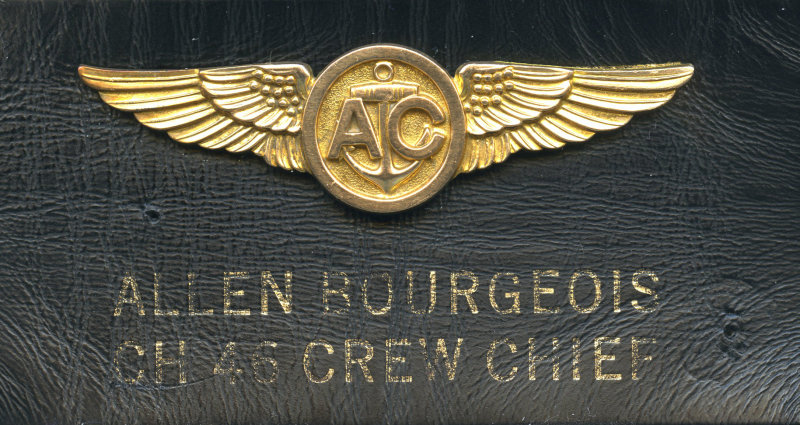If you are a Pilot , then you are qualified to wear wings, if you are non pilot AIR CREW , you are not entitled to wear Pilots wings .
Bah, why would I want to wear pilots wings? They only thing they did is drive me to work.
If you are a Pilot , then you are qualified to wear wings, if you are non pilot AIR CREW , you are not entitled to wear Pilots wings .
Bah, why would I want to wear pilots wings? They only thing they did is drive me to work.

US Army Aviation '15P' Ground Crew get their own snazzy wing....

Aviation Operations Specialist
The role of an Army Aviation Operations Specialist is to coordinate flights. You must be vigilant when looking at weather patterns for air travel. Apply today.www.goarmy.com

Air Crew wings are also in the mix. I was a CH 46 Crew Chief when I was in the Marines. We would often put our actual wings on our name tags like this.

And yes they were very hard earned.
These are stuck directly into the leather with no backings. It wasn't an issue when I served. We all wore our wings on or utilities to. Even every morning on FOD walk. We also always wore our collar rank insignia.
Air Crew wings are also in the mix. I was a CH 46 Crew Chief when I was in the Marines. We would often put our actual wings on our name tags like this.

And yes they were very hard earned.




As stated when I was in the Maines you don't get your wings until after you finish basic and specific helo schools. Then you are a first mech and you still need over 100 flight hours and then you have written tests and an in flight NATOPS evaluation before you earn your wings.
What does the crew chef do in flight? Do you partly duplicate the function of an engineer? Here flight engineer or a flight technician are flight crew member on helicopters, including on big helicopters, but the chief technician - the equivalent of your crew chief - doesn't fly and he lead copter's ground crew.
I'm not from helicopter, all my life on fixed wing.
have not read this thread until now, bit it looks like its been here for a bit. As much as I love wings, squadron patches and all the trimmings, I agree that all military insignia are earned and should really only be worn by the folks who earn them. I think family of military men and women deserve the right to wear a squadron patch or something if they have a spouse serving in that unit. There are now (maybe for a long time) "patching' ceremonies were pilots/aircrew get assigned to operational squadrons. They get their patch of their new unit. These people earned these assignments through hard work. I know many including myself think of patched up jackets as tributes but we can "tribute" without the dress up. I suppose we could take this one step further and say military flight jackets are only given to pilots/aircrew/etc. so even wearing a plain jacket is not appropriate..............
Not losing any sleep over this, still LOVE military aviation and jackets and all things airplane.
What we were responsable was everyhting that went on in the back and to also be able to tell the pilots what was happening when there was a problem like a circuit breaker popping. Talking them into LZs. Talking them over external cargo. Making sure the weight in the back didn't exceed regulations. Making sure all the maintenance was performed correctly by other dept like metal shop, hydraulics avionics etc. Making sure things like phase maintenance was performed on time. When I was in what was considered an operational squadron I was assigned a bird and that bird was my responsibility. Pre flight and post flight inspections. When aboard ship making sure the birds rotor blades are folded and it is tied down properly. Pretty much everything to do with the helicopter in flight and not in flight. Manning 50 cals. Usually first mech would get one and the crew chief the other. And making sure your aircraft met the flight schedule every day. Crew Chief or first mech would collect fuel samples everyday. The Crew Chief would be the first to sign off per flight inspection. Make sure the grunts were in and safe and that there weren't to many on board. That always depended on what and how much gear they were carrying.